Nexxen Discovery wins Best Cookieless Technology in the 2025 Digiday Technology Awards
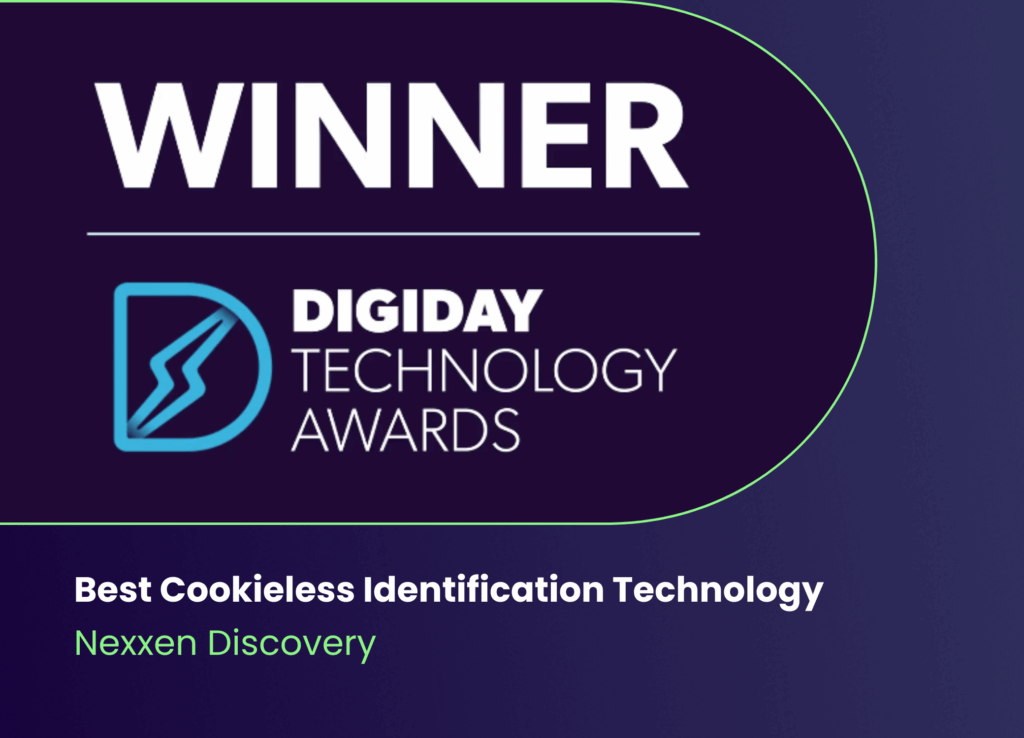
From 0 to 60: Building a Longstanding Brand with the World’s Fastest Sport From 0 to 60: Building a Longstanding Brand with the World’s Fastest Sport
Nexxen Renews and Expands its Strategic Partnership with VIDAA, with a Focus on Growing VIDAA’s North American CTV Footprint
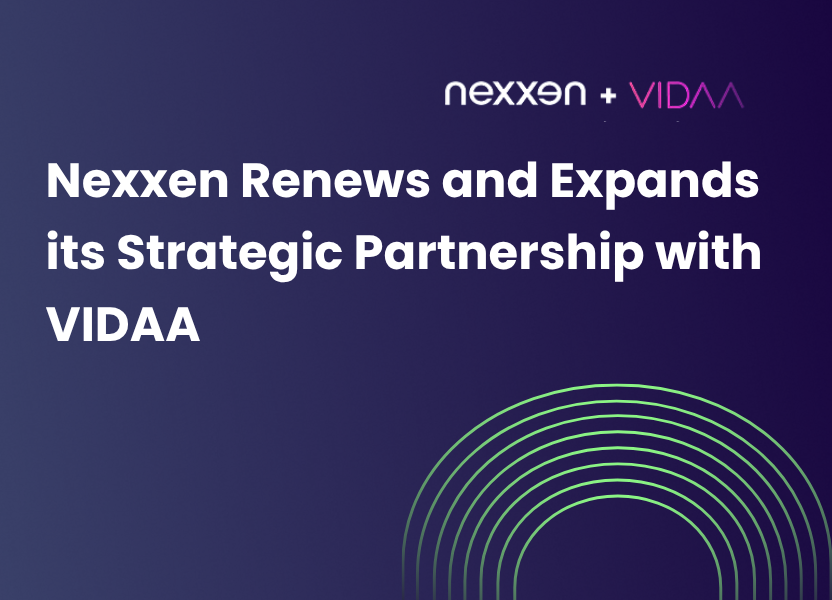
Linkedin Icon-xtwitterlogo-black Agreement extends Nexxen’s global ACR data exclusivity and grants ad monetization exclusivity on VIDAA media in North America through at least the end of 2029 Nexxen investing an additional $35 million in VIDAA to accelerate the expansion of VIDAA’s North American CTV base, ad inventory and ACR data scale NEW YORK, August 11, 2025 – Nexxen International Ltd. (NASDAQ: NEXN) (“Nexxen” or the “Company”), a global, flexible advertising technology platform with deep expertise in data and advanced TV, today announced the renewal and expansion of its long-term strategic partnership with VIDAA, the world’s fastest-growing Connected TV (“CTV”) platform powering tens of millions of CTVs from Hisense, Toshiba and other leading brands globally. Together, the companies will now focus on scaling North American TV distribution and revenue opportunities, increasing monetization within VIDAA — supporting the expansion of in-stream ad inventory both in variety and quality — and growing the availability of automatic content recognition (“ACR”) data for audience targeting and measurement partnerships. Since launching the partnership in 2022, VIDAA has established a leadership position in key international markets — including across Europe, reinforced by a recent agreement with Vestel, and in Australia — while Nexxen has developed a robust infrastructure to ingest and integrate VIDAA’s ACR data into the Nexxen Data Platform. This data now powers advanced audience targeting, insights and measurement capabilities across the U.S., U.K., Canada, Australia and Germany. After years of planting the seeds for growth, this extended partnership marks a shift from building the foundation to unlocking the potential for scalable commercial value. The updated agreement extends Nexxen’s exclusive global access to VIDAA’s ACR data and grants the Company exclusive rights to monetize CTV and native display advertising on VIDAA media in North America through at least the end of 2029. This will enable Nexxen’s customers to gain exclusive access to inventory unavailable via other platforms while also unlocking unique opportunities for Nexxen’s retail and direct-to-consumer advertiser clients. Benefits related to the updated agreement are expected to take effect starting in 2026. After nearly a decade of focusing on developing the ultimate Smart TV platform, VIDAA has firmly established itself among the world’s leading Connected TV platforms. Now, VIDAA is set to take on the U.S. market, building upon its impressive track record of success. Trusted by over 350 brands globally, VIDAA believes its rapid growth and widespread adoption demonstrates the platform’s unparalleled quality and reliability. Through this expanded partnership, VIDAA aims to bring its innovative features and exceptional user experience to one of the most competitive markets in the world. To further support these efforts, Nexxen is investing an additional $35 million in VIDAA, bringing its total investment to $60 million, or approximately 6% of VIDAA’s outstanding shares. The increased investment is expected to benefit Nexxen’s exclusive rights and overall investment over time by driving greater ACR data scale, monetizable ad inventory and user engagement across CTVs. VIDAA will primarily use these additional funds to support retail partnerships and expand its presence across the world’s largest advertising market. “VIDAA’s rapidly expanding distribution makes this an exciting time to deepen our relationship and begin to realize the long-term value of what we have built together. Their growing footprint, combined with our data and TV advertising technology capabilities, paves a long runway for strategic innovation and revenue growth,” said Ofer Druker, Chief Executive Officer of Nexxen. “Since the beginning we have approached this partnership as industry leaders in lockstep, with a clear vision for bringing innovative data solutions to market for Nexxen and its clients to capitalize on the opportunities provided by VIDAA’s growth. Our increased investment is intended to ensure that VIDAA and Hisense will further accelerate expansion in the largest advertising markets globally.” Guy Edri, Chief Executive Officer of VIDAA added, “Nexxen has been a crucial partner in VIDAA’s journey to becoming a leading Smart TV platform, and this new agreement marks a significant step forward in our shared success. Strengthening our collaboration, this partnership plays a key role in supporting our next phase of growth in North America, following our success across other global markets. With Nexxen’s increased investment and expertise in advertising technology, we are now better positioned than ever to deliver exceptional value to users, partners and advertisers worldwide. Together with Nexxen, we are poised to achieve our goal of becoming the world’s largest CTV operating system.” About Nexxen Nexxen empowers advertisers, agencies, publishers and broadcasters around the world to utilize data and advanced TV in the ways that are most meaningful to them. Our flexible and unified technology stack comprises a demand-side platform (“DSP”) and supply-side platform (“SSP”), with the Nexxen Data Platform at its core. With streaming in our DNA, Nexxen’s robust capabilities span discovery, planning, activation, monetization, measurement and optimization – available individually or in combination – all designed to enable our partners to achieve their goals, no matter how far-reaching or hyper niche they may be. Nexxen is headquartered in Israel and maintains offices throughout the United States, Canada, Europe and Asia-Pacific, and is traded on Nasdaq (NEXN). For more information, visit www.nexxen.com. About VIDAA Launched in 2014, VIDAA is a global leader in smart TV platforms, offering cutting-edge technology and user-friendly experiences. With more than 400 brand partners and over 40 million connected devices worldwide, VIDAA provides viewers with access to a broad range of global and local content, with a focus on ease of use, speed, and security. VIDAA’s platform is known for its seamless integration of apps, streaming services, and live TV, delivering an all-in-one entertainment hub to millions of homes. The company continues to innovate by investing in long-term software support, keeping its devices current with the latest advancements in smart TV technology. All information in this press release relating to VIDAA, including information regarding its market position and market growth, is based solely on information provided by VIDAA to Nexxen. None of such information was verified independently by Nexxen, and the Company does not take responsibility for the accuracy of
Nexxen Enhances TV Intelligence in Australia with Expanded Viewership Data

Linkedin Icon-xtwitterlogo-black Extended ACR dataset now captures linear and streaming behaviour across more than 1.9 million devices, unlocking smarter audience planning and activation. SYDNEY, 7 August 2025 — Nexxen, a global, flexible advertising technology platform with deep expertise in data and advanced TV, today announced a major enhancement to its TV Intelligence solution in Australia. With newly expanded automatic content recognition (“ACR”) data from more than 1.9 million VIDAA-enabled smart TVs, Nexxen can now offer advertisers greater visibility into household-level viewership across both linear and streaming environments. TV Intelligence is Nexxen’s integrated suite of planning, activation and measurement tools, designed to help brands navigate the converging TV landscape with clarity and precision. Through this expansion, Australian advertisers gain access to richer insights that capture how audiences engage with content across live TV and apps – enabling more accurate targeting and campaign optimisation across the full media funnel. The enriched data is fully integrated across the Nexxen Discovery platform and demand-side platform (“DSP”), powering more effective audience segmentation, media execution and performance measurement. “As viewer behaviours continue to evolve in Australia, brands and advertisers are increasingly embracing new ways to better understand and engage TV audiences,” said Josif Zanich, Managing Director, JAPAC at Nexxen. “Powered by one of the country’s largest ACR datasets, Nexxen’s TV Intelligence delivers expanded visibility across both linear and streaming platforms, empowering media buyers and traders alike to make more informed decisions on their investments.” This enhanced TV Intelligence offering is available now for Australian customers, with additional activation solutions rolling out soon. About Nexxen Nexxen empowers advertisers, agencies, publishers and broadcasters around the world to utilize data and advanced TV in the ways that are most meaningful to them. Our flexible and unified technology stack comprises a demand-side platform (“DSP”) and supply-side platform (“SSP”), with the Nexxen Data Platform at its core. With streaming in our DNA, Nexxen’s robust capabilities span discovery, planning, activation, monetization, measurement and optimization – available individually or in combination – all designed to enable our partners to achieve their goals, no matter how far-reaching or hyper niche they may be. Nexxen is headquartered in Israel and maintains offices throughout the United States, Canada, Europe and Asia-Pacific, and is traded on the NASDAQ (NEXN). For more information, visit www.nexxen.com. For further information please contact: Genevieve Wheeler, Communications Directorgwheeler@nexxen.com Forward-Looking Statements This press release contains forward-looking statements, including forward-looking statements within the meaning of Section 27A of the United States Securities Act of 1933, as amended, and Section 21E of the United States Securities and Exchange Act of 1934, as amended. Forward-looking statements are identified by words such as “anticipates,” “believes,” “expects,” “intends,” “may,” “can,” “will,” “estimates,” and other similar expressions. However, these words are not the only way Nexxen identifies forward-looking statements. All statements contained in this press release that do not relate to matters of historical fact should be considered forward-looking statements, including without limitation statements regarding any expanded viewership data sets relating to Nexxen’s business and any benefits or insights associated with such increase as well as any benefits associated with any of Nexxen’s other offerings and products and platforms including the Nexxen AI capabilities, Discovery Tool, cross-screen measurement tools, Data Platform and CTV offering. These statements are neither promises nor guarantees but involve known and unknown risks, uncertainties and other important factors that may cause Nexxen’s actual results, performance or achievements to be materially different from its expectations expressed or implied by the forward-looking statements, including, but not limited to, the following: negative global economic conditions; ,including risks related to tariff impacts or policy shifts that could materially affect market sentiment, consumer behavior and advertising demand; global conflicts and war, including the current terrorist attacks by Hamas, and the war and hostilities between Israel and Hamas and Israel and Hezbollah, and how those conditions may adversely impact Nexxen’s business, customers, and the markets in which Nexxen competes. Nexxen cautions you not to place undue reliance on these forward-looking statements. For a more detailed discussion of these factors, and other factors that could cause actual results to vary materially, interested parties should review the risk factors listed in the Company’s most recent Annual Report on Form 20-F, filed with the U.S. Securities and Exchange Commission (www.sec.gov) on March 5, 2025. Any forward-looking statements made by Nexxen in this press release speak only as of the date of this press release, and Nexxen does not intend to update these forward-looking statements after the date of this press release, except as required by law. Read Next Connect With Us Learn how you can effectively and meaningfully leverage today’s video and CTV opportunities with our end-to-end platform, data and insights. Contact Us
Life at Nexxen with Tyler Norwood
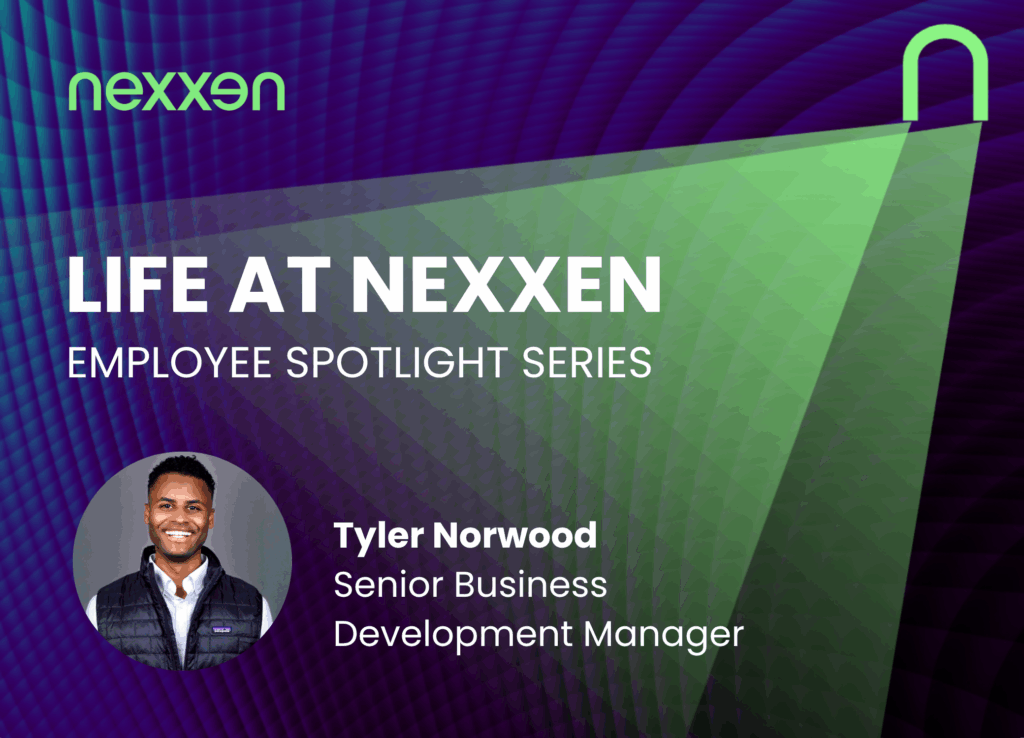
Linkedin Icon-xtwitterlogo-black Life at Nexxen is a blog series spotlighting our employees – from their career journeys and go-to advice to the rituals and activities that make up their days here at Nexxen. In this edition of Life at Nexxen, we spoke with Tyler Norwood, Senior Business Development Manager based in the U.S. west coast. Tyler shared the pivotal moment that shaped his career journey, how autonomy and ownership define his role here at Nexxen, and some great spots to grab a drink in LA. You’ve been with Nexxen for 3 years, originally joining our Unruly team. Before Unruly, were you in the ad tech space? I was working at a mid-level DSP, learning the ropes of programmatic and getting hands-on with strategy, campaign performance, and client partnerships. One day, I received a LinkedIn message from a Tremor recruiter who said, “I think you’d be a great fit for our Business Development team.” I wasn’t actively looking to make a move at the time, but something about the opportunity felt right and that conversation ended up changing everything. Fast forward to today, I’m leading demand facilitation efforts at Nexxen, assisting with driving adoption of our self-service PMP platform CTRL, and representing the company at industry events like Programmatic I/O. It’s been a wild and rewarding ride—and I’m just getting started. You mentioned that you have the same manager now as you did when you originally joined the company? Yes, I’ve been on Ally Appelbaum’s team since day one. She recently stepped into the role of VP of Global CTV Partnerships at Nexxen. When the recruiter first reached out to me about the opportunity, they mentioned that one of the biggest selling points was getting to work with Ally—they weren’t wrong. When I joined, we were a lean team of three. Since then, we’ve not only scaled the team but also helped grow our self-service PMP platform, CTRL, into a key offering for our partners. It’s been rewarding to contribute to that growth. What do you like most about your role at Nexxen right now? Honestly, it’s the mix of ownership and teamwork. In my role, I’m trusted to drive strategy for our partners, but I also get to collaborate with an incredibly sharp and supportive team. That makes a huge difference. No two days are the same. There’s a lot of creativity involved, and I love being in a position where I can connect dots across teams – product, sales, ops, you name it – and help bring ideas to life. It’s fast-paced, but my colleagues at Nexxen make it enjoyable. For business development, what does that role entail here at Nexxen? At Nexxen, business development is all about scaling strategic partnerships and driving long-term growth. In my role as a Senior Business Development Manager focused on Demand Facilitation, I run point on CTRL platform adoption with our supply partners, assisting them in packaging their own PMP deals, while also surfacing premium inventory opportunities across our internal demand teams. This includes unlocking high-value supply such as live sports, first-ad-slot targeting, and seasonal tentpoles. In a competitive SSP landscape, relationships are everything. Publishers choose partners based not only on technology but on trust and strategic collaboration. The enterprise supply team’s responsibility is to strengthen those relationships and help our partners succeed. Going further back in your career journey, what was your college major? I earned a BA in Communications and later attended graduate school to get my MBA, focusing on strategic management. During the pandemic, I even gave law school a shot for a semester, but it didn’t take long to realize that path wasn’t for me. That decision ended up being a blessing. I pivoted into ad tech and got my start at a mid-sized DSP, where I had to learn everything from the ground up: how programmatic works, how deals are structured, and how buyers and sellers connect in the ecosystem. It was (and still is) a learning curve, but it set the stage for where I am now. So in your day-to-day at Nexxen, do you have a morning routine? Music first—usually a Spotify “hype” playlist to get in the zone. Then it’s coffee, NPR for broader news, and a quick scroll through Digiday or AdExchanger to stay current on trends shaping the ad tech space. It helps me walk into the day informed. Do you have any hobbies that you enjoy doing on the weekends? I love trying out new happy hours around LA with my triplet brothers, carving out time to read, or making the drive to San Diego for beach days and scenic hikes. Is there any place in LA that you’d recommend for their Happy Hour? Laurel Tavern in Studio City—great food and a solid Old Fashioned. For something more laid-back, I head to Tiny’s Hi Dive on the west side. It’s a dive bar with character, where I’ll head with coworkers after work. Read Next Connect With Us Learn how you can effectively and meaningfully leverage today’s video and CTV opportunities with our end-to-end platform, data and insights. Contact Us
AdExchanger Talks: Making Sense of DSP-SSP Convergence with Kara Puccinelli
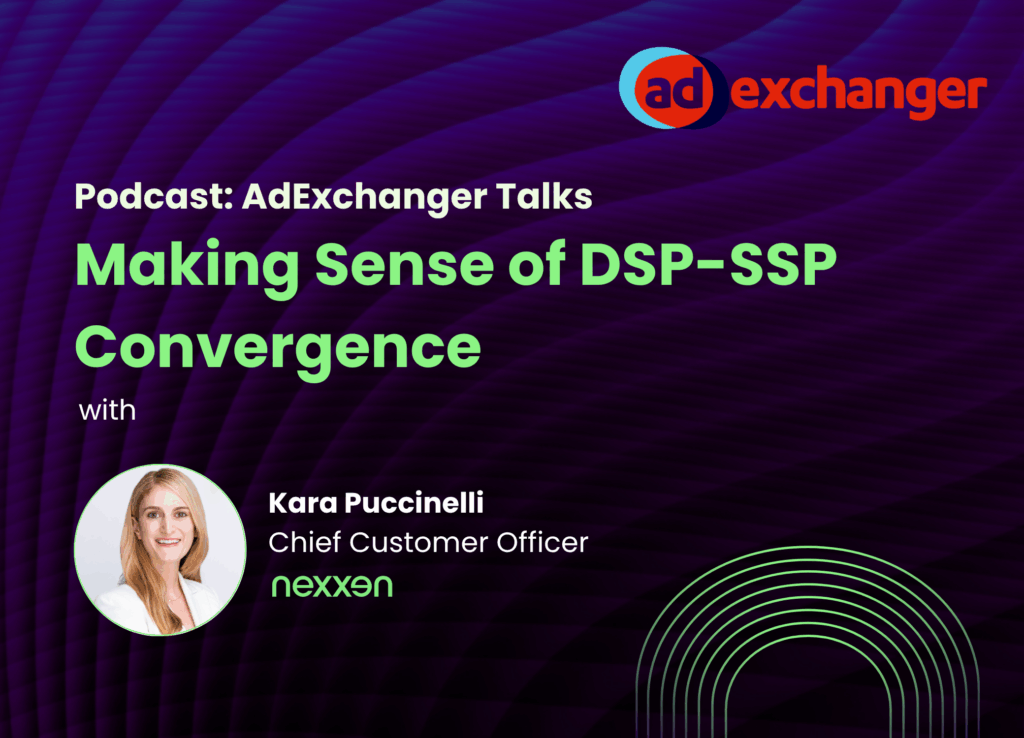
From 0 to 60: Building a Longstanding Brand with the World’s Fastest Sport From 0 to 60: Building a Longstanding Brand with the World’s Fastest Sport
Nexxen Bolsters Commercial Leadership with Enterprise and Data Hires
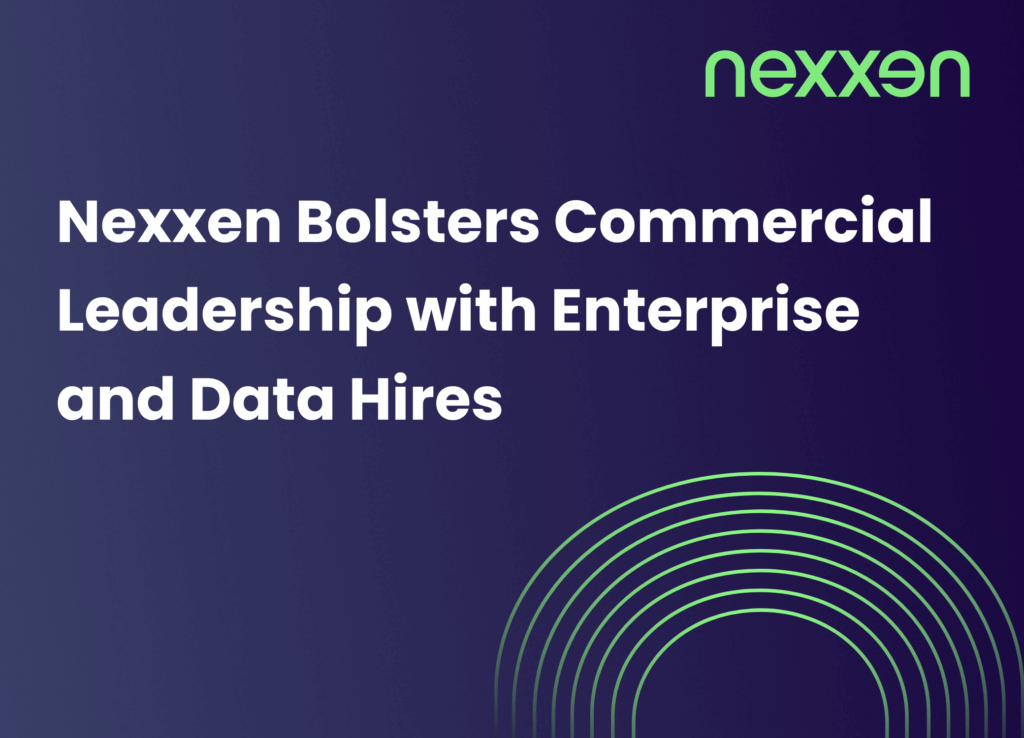
Linkedin Icon-xtwitterlogo-black New roles to accelerate DSP adoption and scale Nexxen’s data-driven TV solutions New York, July 30, 2025 – Nexxen (NASDAQ: NEXN), a global, flexible advertising technology platform with deep expertise in data and advanced TV, today announced two key additions to its commercial leadership team, underscoring its continued investment in enterprise sales growth and data-led innovation. Irina Katsnelson has joined as Senior Vice President of Enterprise Sales, a newly created role focused on accelerating adoption of Nexxen’s demand-side platform (“DSP”) and driving new business growth. She has led high-performing sales teams for more than a decade, most recently at Viant Technology, and previously held roles at Juice Mobile, News Corp and Evolve Media. “Nexxen’s platform stands out in a complex landscape, and I see real potential to unlock new opportunities for brands and agencies here,” said Katsnelson. “I’m looking forward to drawing on my experience across both established companies and agile teams to help shape a thoughtful, future-facing approach to client engagement and enterprise success.” Additionally, Oscar Rondon has joined Nexxen as Vice President of Data and Measurement Solutions. In this capacity, he will own the commercial strategy, growth and end-to-end operations for Nexxen’s TV Intelligence (“TVI”) offering, which leverages exclusive automatic content recognition (“ACR”) data to help advertisers plan, activate and measure campaigns seamlessly across linear and digital channels. With nearly 20 years of leadership experience at MiQ, VideoAmp, Ampersand and Adobe, Rondon brings a proven track record of strengthening media strategies with data. “I’ve spent my career at the intersection of media, data and technology – what’s unique about Nexxen is how it weaves them into one unified solution,” said Rondon. “I’m excited to partner with sales, product and marketing to scale TVI, accelerate growth and deliver smarter, more impactful solutions for our clients.” “These new roles reflect our commitment to advancing Nexxen’s commercial strategy and delivering best-in-class offerings to both buy- and sell-side partners,” said Kara Puccinelli, Chief Customer Officer at Nexxen. “Irina and Oscar bring deep expertise, strong reputations and proven leadership that will strengthen our go-to-market approach, expand our reach and deepen our relationships across the ecosystem. We’re thrilled to have them onboard.” About Nexxen Nexxen empowers advertisers, agencies, publishers and broadcasters around the world to utilize data and advanced TV in the ways that are most meaningful to them. Our flexible and unified technology stack comprises a demand-side platform (“DSP”) and supply-side platform (“SSP”), with the Nexxen Data Platform at its core. With streaming in our DNA, Nexxen’s robust capabilities span discovery, planning, activation, monetization, measurement and optimization – available individually or in combination – all designed to enable our partners to achieve their goals, no matter how far-reaching or hyper niche they may be. Nexxen is headquartered in Israel and maintains offices throughout the United States, Canada, Europe and Asia-Pacific, and is traded on the Nasdaq (NEXN). For more information, visit www.nexxen.com For further information please contact: Genevieve Wheeler, Communications Directorgwheeler@nexxen.com Forward-Looking Statements This press release contains forward-looking statements, including forward-looking statements within the meaning of Section 27A of the United States Securities Act of 1933, as amended, and Section 21E of the United States Securities and Exchange Act of 1934, as amended. Forward-looking statements are identified by words such as “anticipates,” “believes,” “expects,” “intends,” “may,” “can,” “will,” “estimates,” and other similar expressions. However, these words are not the only way Nexxen identifies forward-looking statements. All statements contained in this press release that do not relate to matters of historical fact should be considered forward-looking statements, including without limitation statements regarding the acquisition or hiring of new talent and any benefits or insights associated with such hirings as well as any benefits associated with any of Nexxen’s offerings and products and platforms including the Nexxen AI capabilities, Discovery Tool, cross-screen measurement tools, Data Platform and CTV offering. These statements are neither promises nor guarantees but involve known and unknown risks, uncertainties and other important factors that may cause Nexxen’s actual results, performance or achievements to be materially different from its expectations expressed or implied by the forward-looking statements, including, but not limited to, the following: negative global economic conditions; ,including risks related to tariff impacts or policy shifts that could materially affect market sentiment, consumer behavior and advertising demand; global conflicts and war, including the current terrorist attacks by Hamas, and the war and hostilities between Israel and Hamas and Israel and Hezbollah, and how those conditions may adversely impact Nexxen’s business, customers, and the markets in which Nexxen competes. Nexxen cautions you not to place undue reliance on these forward-looking statements. For a more detailed discussion of these factors, and other factors that could cause actual results to vary materially, interested parties should review the risk factors listed in the Company’s most recent Annual Report on Form 20-F, filed with the U.S. Securities and Exchange Commission (www.sec.gov) on March 5, 2025. Any forward-looking statements made by Nexxen in this press release speak only as of the date of this press release, and Nexxen does not intend to update these forward-looking statements after the date of this press release, except as required by law. Read Next Connect With Us Learn how you can effectively and meaningfully leverage today’s video and CTV opportunities with our end-to-end platform, data and insights. Contact Us
Nexxen Named a Finalist Across Multiple Categories in the 2025 Digiday Technology Awards

From 0 to 60: Building a Longstanding Brand with the World’s Fastest Sport From 0 to 60: Building a Longstanding Brand with the World’s Fastest Sport
How Nexxen’s AI platform empowers advertisers and publishers
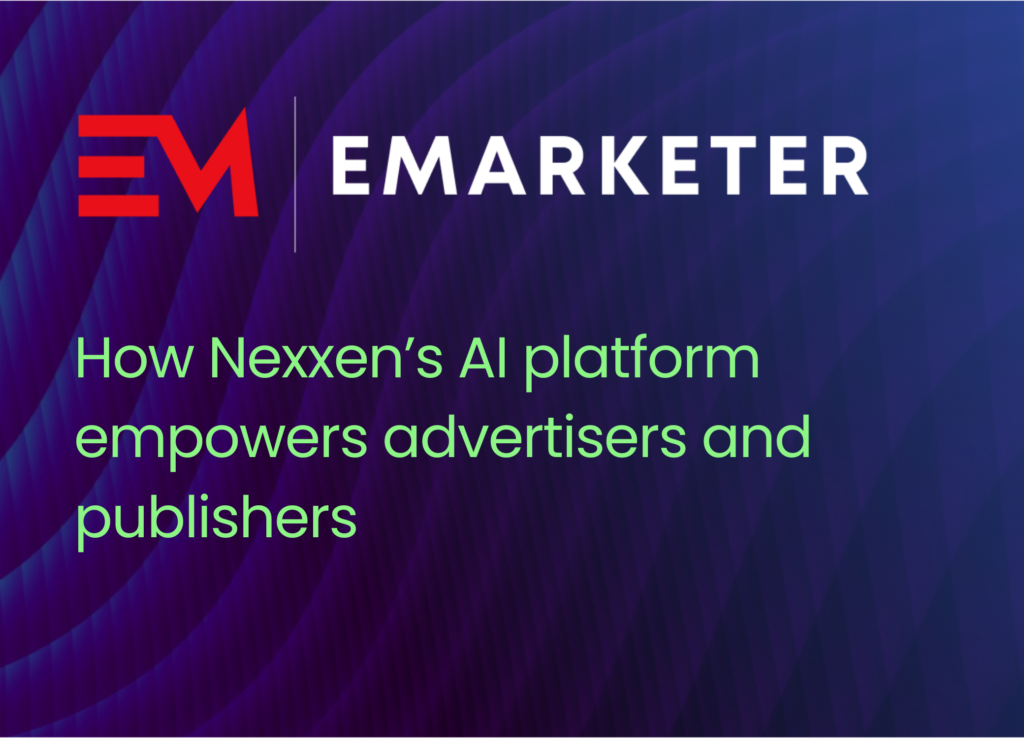
From 0 to 60: Building a Longstanding Brand with the World’s Fastest Sport From 0 to 60: Building a Longstanding Brand with the World’s Fastest Sport
From Cannes to Everywhere: Nexxen’s Customer-First Momentum

From 0 to 60: Building a Longstanding Brand with the World’s Fastest Sport From 0 to 60: Building a Longstanding Brand with the World’s Fastest Sport
Cannes Lions 2025 Sport Beach Panel: From 0 to 60: Building a Longstanding Brand with the World’s Fastest Sport

From 0 to 60: Building a Longstanding Brand with the World’s Fastest Sport From 0 to 60: Building a Longstanding Brand with the World’s Fastest Sport
